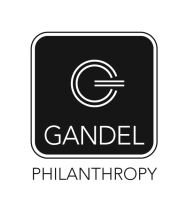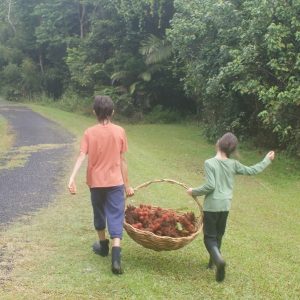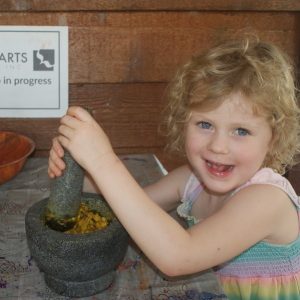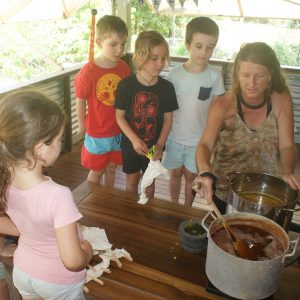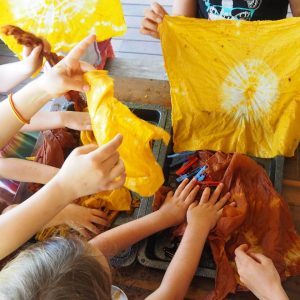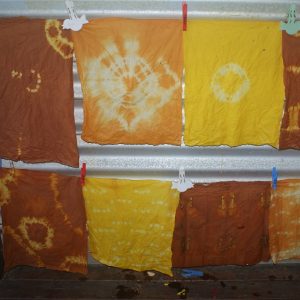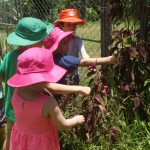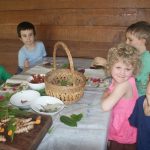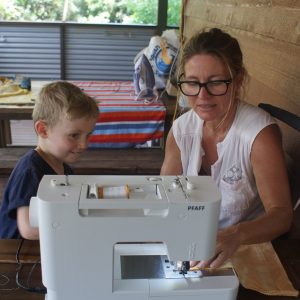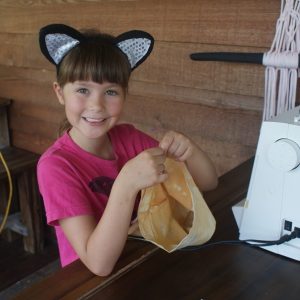Natural fabric artist Nina Dawson facilitated 5 cross-curriculum workshops at her local The Rainforest School in Mission Beach, Queensland, working alongside the school to explore science, technology and visual arts.
This project was a part of Flying Arts Alliance’s Small Schools Fund, which allows schools with 50 or fewer students in regional and remote Queensland to apply for a bursary of up to $5000 per school year for curriculum linked projects.

The Rainforest School ran a five-week arts incursion called Designs by Nature, where Facilitator Nina Dawson lead a full-day workshop each week about creating art using natural resources. Each day of the program, students ventures onto the school grounds and learned collaboratively about using leaves, roots, flowers and water to create fabric designs.
Workshop 1: Preparing the Natural Dye and Fabrics
On the first workshop day, Nina and the students collected and prepared natural materials to create fabric dye. They ventured onto the school grounds to a Bixa tree (also known as a lipstick tree) to harvest the highly-pigmented red seeds. The group then dug up turmeric and washed and ground it with a mortar and pestle.
The children also prepared all the fabric for dyeing, which included washing and scrubbing the calico and ripping it into smaller pieces needed for the following workshops.
Workshop 2: Making Natural Dyes and Fabric Designs
To begin the second workshop, Nina talked to the children about how she makes a living as an artist. Specialising in textile art, Nina showcased some of her naturally-dyed clothing and explained how the students would be using similar techniques in the workshop.
Next, Nina and the students placed dye materials into big pots of water to put on the stove and bring to the boil. These were used for dying squares of fabric (prepared in the last workshop) to create draw-string pouches. Nina then taught the children how to use pegs and rubber bands to segment the fabrics which would create patterns with the dyes. The children then got to dye their fabric in the three different dyes (brown from onion skin, yellow from turmeric and red from bixa seeds). All the children were excited to remove their fabric, take off the rubber bands and pegs to reveal the earthy patterns, rinse and hang out their fabric to dry.
Workshop 3: Dying Aprons and Tea Towels with Indigo
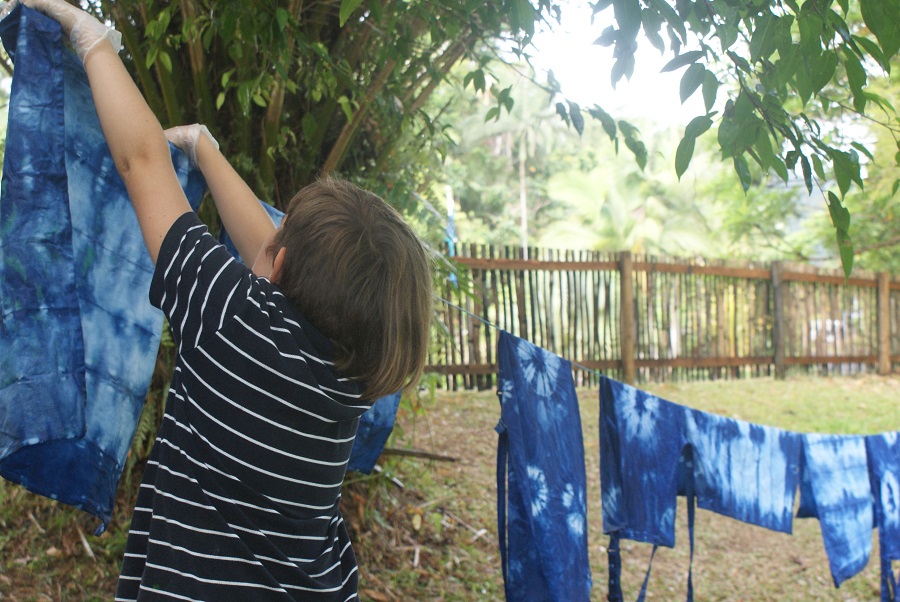
For the third workshop, the students learnt how to create patterned aprons and tea towels using natural Indigo dyes. Much emphasis was put on the necessity to wear gloves as Indigo stains easily. Each of the students worked on their own white apron and tea towel, creating designs with pegs and strings. Nina then showed the indigo process and explained that oxygen is needed for the colour change. The students were mesmerized as they saw the colour change from yellow to dark blue.
After dyeing the aprons and tea towels, the students rinsed and hung their aprons and tea towels to dry on the washing line.
Workshop 4: Dyeing Paper Cards with Natural Dyes, Flower and Leaves
Nina lead the students on a bush walk to collect flowers, leaves and various seeds to be used as pigment for paper gift cards. The students learnt about which plants would have the highest concentration of pigments for the dying process.
Upon returning to the classroom, the students designed their artwork on 100% cotton paper using the collected resources. The completed cards were then clamped together in a flower press and boiled in water.
The workshop concluded by viewing the end result. In the final workshop the paper will be cut up and glued onto gift cards.
Workshop 5: Sewing Draw String Bags and Screen Printing Indigo Dyed Aprons
For the final workshop, the students wrapped up each of their projects. The students sewed together their string bag with the help of one of the School’s staff, using the pedal
Under the guidance of one of the School’s staff, the students learn how to use a sewing machine (controlling the speed by using the foot pedal) to turn their fabrics from workshop 2 into draw-string bags.
Next, with assistance of Nina and the School’s principal Julie, the students screen printed their own indigo-dyed apron with the school logo. Julie and Nina explained the basics of screen printing after which the students had a go themselves.
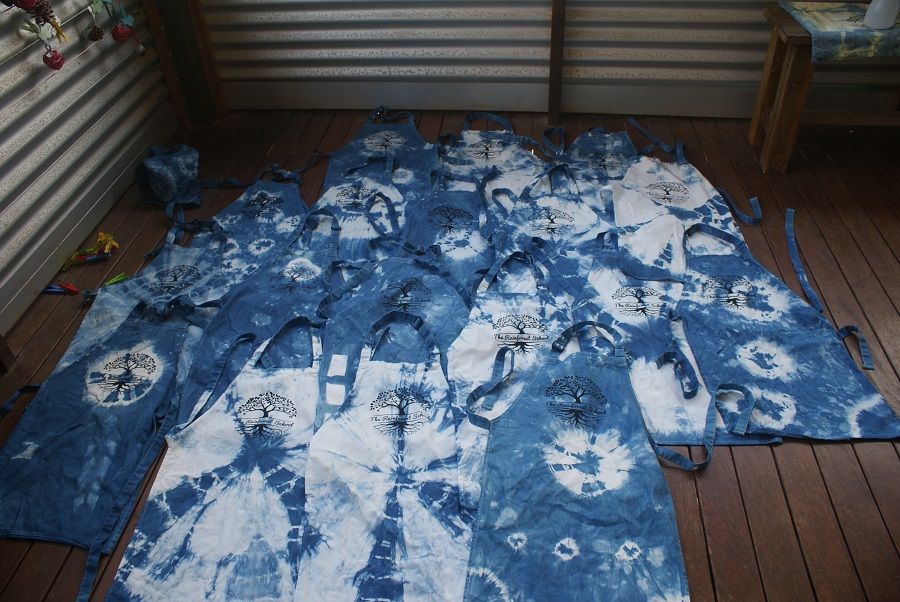
Finally, with the help of Nina and Julie, the students cut their dyed nature cards into smaller pieces. These pieces were then glued onto blank gift cards.
The aprons created during the incursion will be used in the school kitchen and the drawstring bags will be used as library bags. The students were very proud they created something so beautiful with nature as the main resource.
Facilitator Nina Dawson said that she was delighted with the outcome of the workshop and thoroughly enjoyed seeing the student’s enthusiasm to learn new skills.
“The kids were my highlight as they loved seeing what colours would come from plants they recognised. The school was a beautiful learning and teaching environment with lovely, helpful teachers for support.
This is the first kids workshop I have facilitated on natural dyes so it was great to see how the kids reacted and to see what worked well for the kids. It also gave me an idea of how to engage children and their attention spans for a workshop. It has given me the confidence to teach similar workshops with kids in the future.
I think this was the perfect kind of workshop for the Rainforest School as it is a nature based learning school and the environment was perfect for it. The kids are encouraged to engage with nature and therefore the kids really enjoyed the workshop as they were used to this style of teaching and learning.
I think the outcome for me will be that I will teach more of these kinds of workshops for kids. I think it will flow from here into the community and engage other school kids in this kind of nature learning. I have had lots of positive feedback from parents and teachers who thought it was a great way to teach kids about nature and some other life skills, such as sewing.”
The Small Schools Fund allows schools with 50 or fewer students in regional and remote Queensland to apply for funds up to $5000 per school year for curriculum linked projects (inclusive of facilitator fees, travel and accommodation). This opportunity allows schools to work collaboratively with an experienced artist to plan and deliver a visual arts incursion (workshop/residency) of your selection to create an arts rich experience for students and the wider school community.
The Lesson Plan for this workshop will be available in the near future. In the meantime, view other Small Schools Funded Project lesson plans on our Educators Resource page.
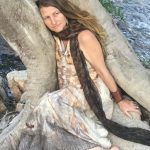 Nina Dawson is a freelance artist who runs North Queensland based eco-dyeing business Birdtribe Wearable Art. Following degrees in Science and Environmental Studies, Nina’s practice continues to reflect this interest, utilising natural products to provoke discussion about environmental issues. Nina worked at Girringun Art Centre as the Arts Coordinator for seven years, and has showcased her work at prestigious runway events around the country, including Ecofashion Week Australia in Port Douglas and Melbourne Fashion Festival. She has also exhibited her work and been part of projects both nationally and internationally.
Nina Dawson is a freelance artist who runs North Queensland based eco-dyeing business Birdtribe Wearable Art. Following degrees in Science and Environmental Studies, Nina’s practice continues to reflect this interest, utilising natural products to provoke discussion about environmental issues. Nina worked at Girringun Art Centre as the Arts Coordinator for seven years, and has showcased her work at prestigious runway events around the country, including Ecofashion Week Australia in Port Douglas and Melbourne Fashion Festival. She has also exhibited her work and been part of projects both nationally and internationally.
Thanks to the incredibly successful Make Art Big in Small Schools campaign, Creative Partnerships Plus 1 funding and generous support from Gandel Philanthropy, Flying Arts has been able to dedicate over $40,000 to cross curriculum arts incursions in 2019. Consider supporting Flying Arts to provide more projects like this – all donations over $2 are tax deductible.
